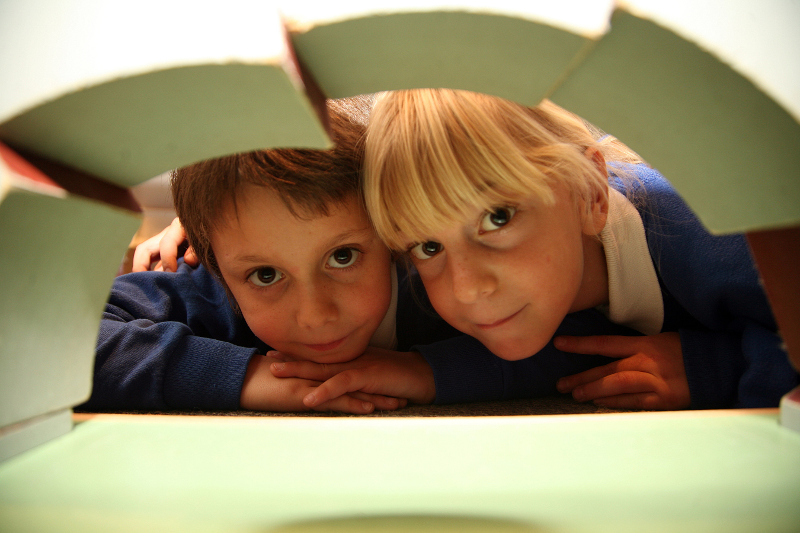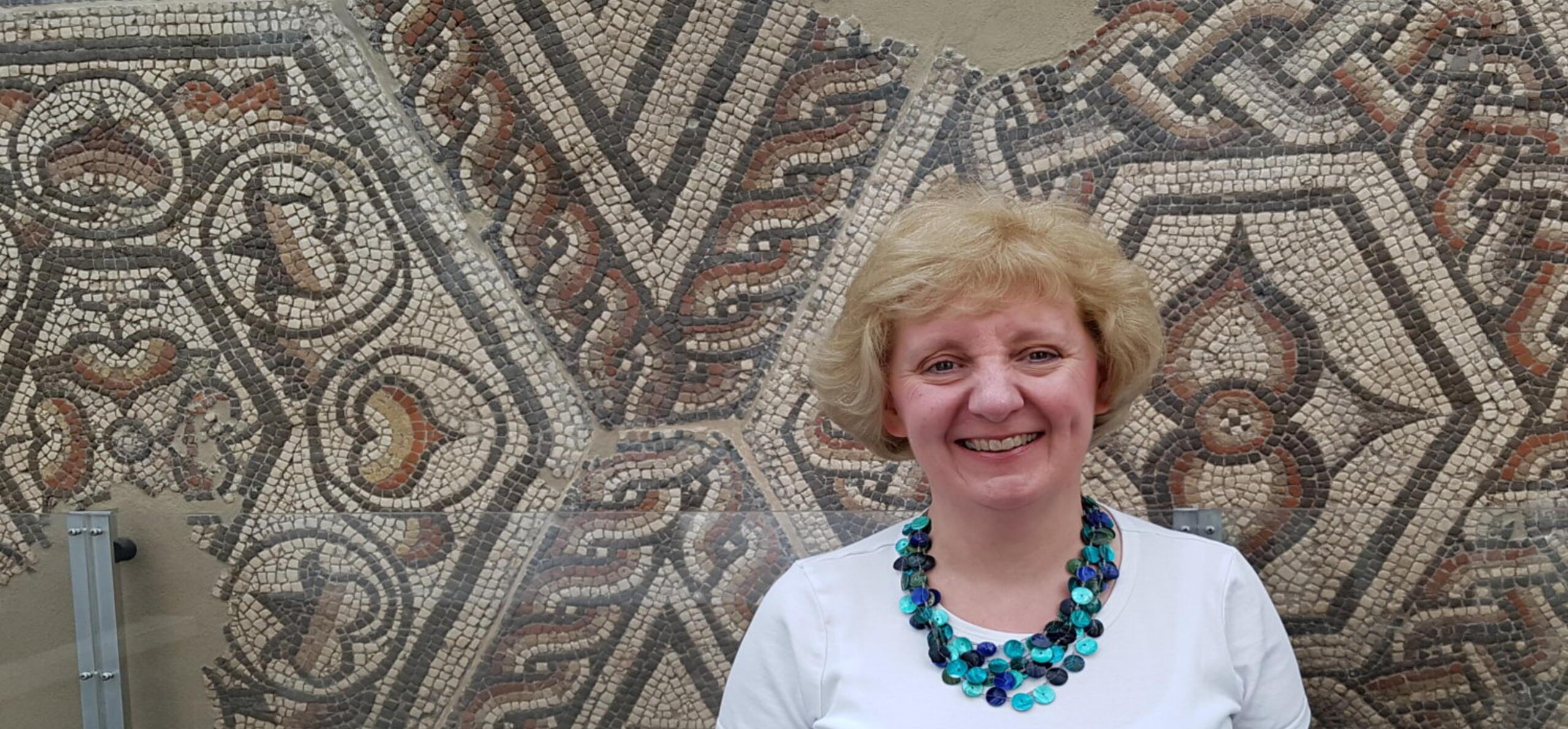Carolyn Morton delivers a range of school sessions in the museum but one of her favourites is ‘Roman Life’. She has worked for Reading Museum for a long time and seen many changes over the years. With the launch of the new school room at the Abbey Gateway and the re-opening of the ruins, it is an opportunity to look to the future but it is also a chance to take stock of what we already do so well!
Carolyn tells us exactly what makes ‘Roman Life’ so fun and rewarding to teach below:

Building a Roman Arch
Roman Life School Session
By Carolyn Morton
From Roman toilets (just what did they use instead of toilet paper?) to how to wear a toga and how Britons showed off their wealth during the Roman period of occupation, this session has it all. It has something for everyone and that is why I really enjoy leading this session.
Having studied archaeology myself and felt the spine chilling sensation of touching something once held by another human many years before, I feel so privileged to teach this great session. I really enjoy watching the look of amazement on some of the children’s faces as I say to them “Today you will have opportunity to handle objects which are over a thousand years old and some of which, may indeed have been made by children your age!”
Children handle stone, clay and glass tiles, called tesserae, which were used to make mosaics. When they go into the Atrium and look up at the two large mosaics excavated from a town house in Silchester, they often wonder at the sheer size and scale of the designs. We challenge them to find particular motifs within the larger mosaics such as a large flower, a heart shape or chain pattern. Once they have looked closely, they begin to realise just how many hours or rather days it would have taken children like them to make just such a mosaic and they begin to appreciate the craftsmanship involved!
For some, their interest is captured by looking at new technologies introduced to Britain by the Romans. Before coming to the Roman session, they may have just taken the idea of the arch for granted, but this new technology revolutionised the way things were built. New possibilities arose of construction arose. People could now bridges over rivers, which had previously been deemed too wide to build a bridge across, and construct buildings more than one storey high! The arch building activity often proves to be a favourite and the children work in teams to build one of their own. Using the model stones is something I love to watch as they problem solve and refine their design to get the perfect curve to the underneath of their arch.
Asking the children questions about the Roman artefacts they match to modern everyday objects is great fun! After their journey around the gallery being great detectives peering into the display cabinets, I ask them to share what they may have found. Their answers can be quite varied: be it a stoneware baby’s bottle, so different from today, or the fact that a fragile glass bowl has survived over a thousand years. Some are astonished that the Romans did not have mirrors as such, but relied on a highly polished metal surface to provide a reflection. Truly it is a pleasure to gain an insight into what captured their interest and why.
If you think your class might enjoy the things from the session that I have mentioned already and would like to know more (like, what is the connection was between popular local gladiators and the perfume sold in the market place in Silchester?) then why not come and experience the Roman session here at Reading Museum.
Find out more
This term we will be sharing more experiences from our fantastic Session Leaders so keep an eye out for more posts about what we do here at Reading Museum!
You can find out more about what the Education Team offers on our on our schools page





